The Prime Minister of India is appointed by the President of India. The Prime Minister is the leader of a democratically elected government in the country.
When India got independence on 15 August 1947, then Jawaharlal Nehru was elected the first Prime Minister of India from 15 August 1947 to 27 May 1964.
The current Prime Minister of India is Narendra Modi who has held this post since 26 May 2014. Since Independence, 14 Prime ministers have held this position. And we will see the chronological order of those Prime ministers in this article.
Narendra Modi is serving as Prime Minister for the second time after the party won with a majority in the 2019 election. He took the oath as Prime Minister of India on 30 May 2019.
In this article we will learn about the list of Indian Prime Ministers along with their birth-death date, age, tenure, also the article related to the Prime Minister (Article 75), and the salary of the Prime Minister of India.
A list of the Indian Prime Minister from 1947 are given below -
|
S.No. |
Prime Minister |
Date of Birth |
Date of death |
Tenure |
|
1. |
Jawahar Lal Nehru |
14 November 1889 |
27 May 1964 |
15 August 1947-27 May 1964 16 years, 286 days |
|
|
Gulzarilal Nanda (Acting) First time |
4 July 1898 |
15 January 1998 |
27 May 1964-9 June 1964 13 days |
|
2. |
Lal Bahadur Shastri |
2 October 1904 |
11 January 1966 |
9 June 1964-11 January 1966 1 year, 216 days |
|
|
Gulzari Lal Nanda (Acting) Second time |
19 November 1917 |
31 October 1984 |
11 January 1966-24 January 1966 13 days |
|
3. |
Indira Gandhi First time |
19 November 1917 |
31 October 1984 |
24 January 1966-24 March 1977 11 years, 59 days |
|
4. |
Morarji Desai |
29 February 1896 |
10 April 1995 |
24 March 1977-28 July 1979 2 year, 126 days |
|
5. |
Chaudhari Charan Singh |
23 December 1902 |
29 May 1987 |
28 July 1979-14 January 1980 170 days |
|
|
Indira Gandhi Second time |
19 November 1917 |
31 October 1984 |
14 January 1980-31 October 1984 4 years, 291 days |
|
6. |
Rajiv Gandhi |
20 August 1944 |
21 May 1991 |
31 October 1984-2 December 1989 5 years, 32 days |
|
7. |
V. P. Singh |
25 June 1930 |
27 November 2008 |
2 December 1989-10 November 1990 343 days |
|
8. |
Chandra Shekhar |
19 April 1927 |
8 July 2007 |
10 November 1990-21 June 1991 223 days |
|
9. |
P. V. Narasimha Rao |
28 June 1921 |
23 December 2004 |
21 June 1991-16 May 1996 4 years, 330 days |
|
10. |
Atal Bihari Vajpayee First time |
25 December 1924 |
16 August 2018 |
16 May 1996-1 June 1996 16 days |
|
11. |
H. D. Deve Gowda |
18 May 1933 |
_ |
1 June 1996-21 April 1997 324 days |
|
12. |
Inder Kumar Gujral |
4 December 1919 |
30 November 2012 |
21 April 1997-19 March 1998 332 days |
|
|
Atal Bihari Vajpayee Second time |
25 December 1924 |
16 August 2018 |
19 March 1998-22 May 2004 6 years, 64 days |
|
13. |
Manmohan Singh |
26 September 1932 |
_ |
22 May 2004-26 May 2014 10 years, 4 days |
|
14. |
Narendra Modi |
17 September 1950 |
_ |
26 May 2014-23 May 2019 30 May 2019-Incumbent |
A brief description of all Indian Prime Ministers is given below -
The Geography of India - Size and Location
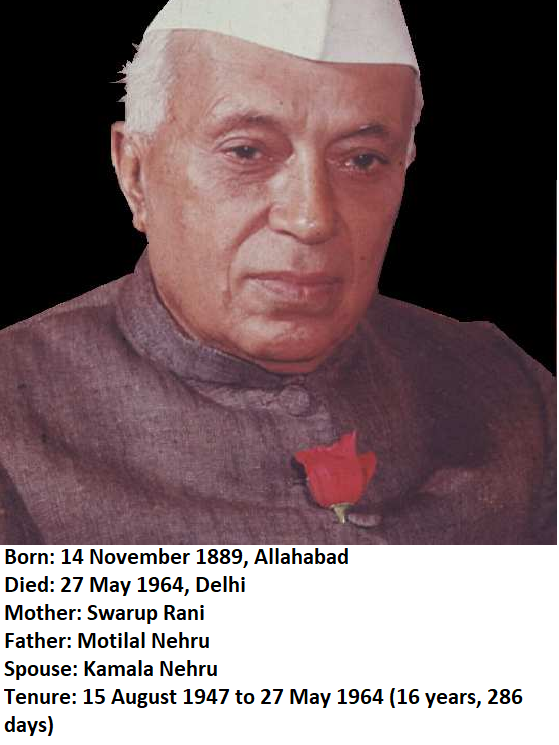
Jawaharlal Nehru was the first Prime Minister of India. He was called Chacha Nehru for his love for children.
He was also known as Pandit Nehru because of his roots in the Kashmiri Pandit community.
Jawaharlal Nehru was the eldest of three children, with the remaining two being girls. The elder sister, Vijaya Lakshmi, later became the first woman President of the United Nations General Assembly. The youngest sister, Krishna Hathising, became a notable writer and wrote several books related to her family members.
Nehru received his early education from private teachers at his home. At the age of 15, he had gone to London and he continued his education in England, first at the Harrow School and then at Trinity College, Cambridge, where he earned an honors degree in natural science.
Rivers of India: Origin, Length, and Tributaries
He later studied law at the Inner Temple in London. Then he returned home to India in 1912 and practiced law for several years, and he became involved in Indian politics.
He was married to Kamla Nehru in 1916.
In India, his birthday, 14 November is celebrated as Children's Day.
Jawaharlal Nehru was the longest-serving prime minister of India. He served from 1947 to 1964. He was awarded the Bharat Ratna in 1955.
'Discovery of India' was the most popular book written by Jawaharlal Nehru Ji, this book he wrote while in jail in 1944 Ahmednagar (Maharashtra).
The list of books written by Jawaharlal Nehru -
National Symbols of India: Flag, Anthem, Animal, Bird
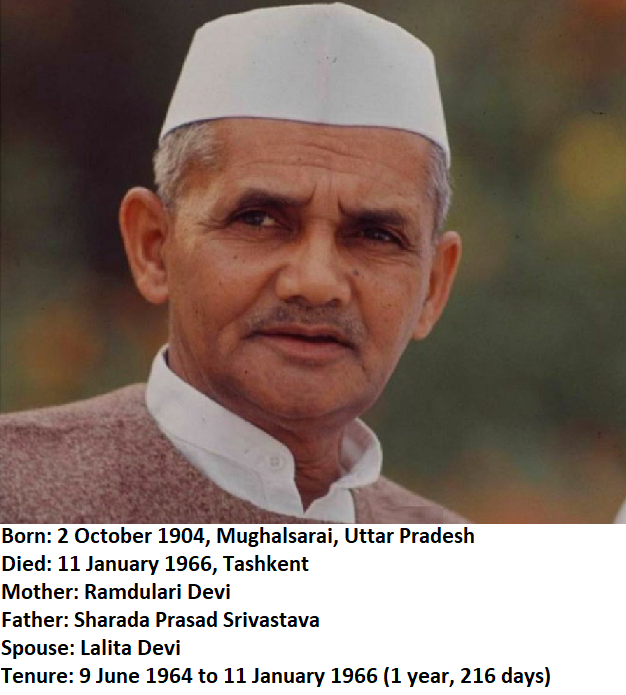
Lal Bahadur Shastri was the second Prime Minister of India.
He studied at East Central Railway Inter college and Harish Chandra High School.
Shastri Ji received the title of Shastri from Kashi Vidyapeeth. After receiving the title of Shastri from Kashi Vidyapeeth, he removed the caste-related term Srivastava from birth forever and put 'Shastri' in front of his name.
In 1927, he got married, His wife, Lalita Devi.
He was actively involved in all the important programs and movements of the Indian freedom struggle and as a result, he had to stay in jails many times.
He was given the slogan of "Jai Jawan, Jai Kisan" during the 1965 Indo-Pakistan war.
He died under mysterious circumstances on the night of 11 January 1966 after signing an agreement to end the war with Pakistan's Prime Minister Ayub Khan in Tashkent.
He was posthumously awarded the Bharat Ratna.
He remained the Prime Minister of India for nearly eighteen months from 9 June 1964 until his death on 11 January 1966.
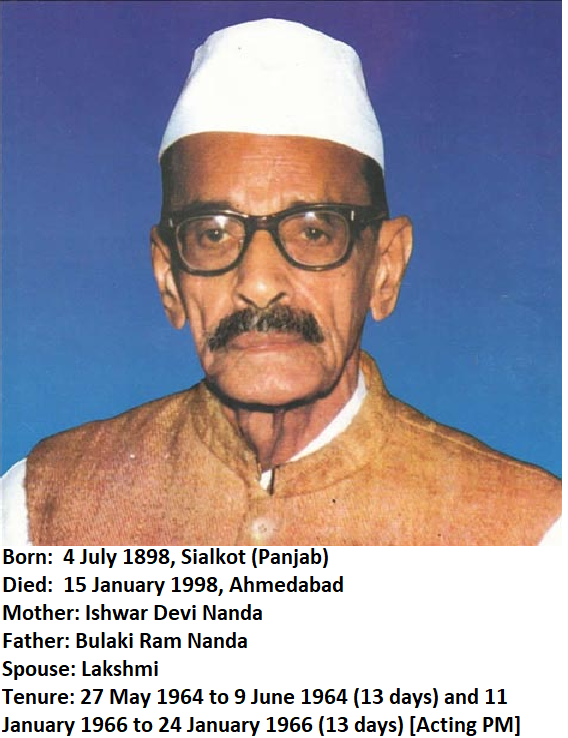
Gulzarilal Nanda was the first Acting Prime Minister of India. An Acting Prime Minister is one who serves the post of the Prime Minister until another person is elected Prime Minister by the party.
Gulzarilal Nanda received his education in Lahore, Amritsar, Agra, and Prayagraj.
He married Laxshmi Devi in 1916.
Gulzari Lal Nanda received a Master's degree in Arts and a Bachelor of Laws degree.
He worked as a research scholar on labor problems at the University of Allahabad (1920-1921).
He served as a lecturer in economics at the National College in Mumbai in 1921.
He was also the secretary of the Labor Association in the textile industry of Ahmedabad and he held this position from 1922 to 1946.
Nanda was the Acting Prime Minister of India twice for thirteen days each: He was elected as acting Prime Minister in 1964 after the death of Pandit Jawaharlal Nehru for the first time.
He became the acting Prime Minister for the second time in 1966 after the death of Lal Bahadur Shastri.
Gulzari Lal Nanda remained the acting Prime Minister until the Congress Parliamentary Party chose Indira Gandhi as the legitimate successor of Shastri.
He was awarded the 'Bharat Ratna' in 1997.
International Airport in India
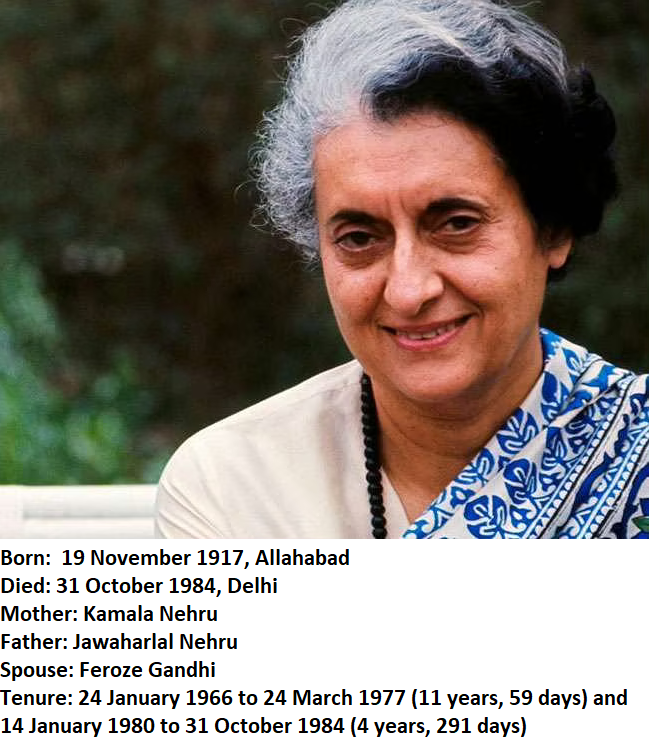
Indira Gandhi was the third Prime Minister of India.
She was the daughter of Jawaharlal Nehru and she was the first female prime minister of India.
Indira Gandhi was the second longest-serving prime minister of India after his father Jawaharlal Nehru. Indira Gandhi's full name was Indira Priyadarshini Gandhi.
Indira got her early education at home by a home tutor. After completing her schooling in 1934–35, Indira joined the Visva-Bharati University in West Bengal, set up by Rabindranath Tagore in Shantiniketan. Rabindranath Tagore named her "Priyadarshini". She then moved to England and sat the Oxford University entrance exam, but failed in it and after spending a few months at the Badminton School in Bristol, joined the Somerville College, Oxford, after succeeding in the exams in 1937.
Top 10 most populated countries in the world
Her early education was done at home. He received further education from Visva Bharati University in West Bengal and Oxford University in England.
She married Feroze Gandhi in 1942. She got the "Gandhi" surname after her marriage to Feroze Gandhi.
In 1964, she became a member of the Rajya Sabha. He then became the Information and Broadcasting Minister in Lal Bahadur Shastri's cabinet.
After the untimely death of Shri Lal Bahadur Shastri, the second Prime Minister of India, on 11 January 1966, Mrs.
Indira Gandhi became the third and first woman Prime Minister of India on 24 January 1966 (during this period Gulzarilal Nanda was the Acting PM for 13 days). After this, she became the Prime Minister of the country for three consecutive terms 1967–1977 and again for the fourth time in 1980–84.
She could win the 1967 election with a very small majority, but again in 1971 she became the Prime Minister with an overwhelming majority and remained till 1977.
She again became the Prime Minister in 1980 and remained the Prime Minister till her death in 1984.
Indira Gandhi also served as External Affairs Minister in1984, Defense Minister in 1980 - 82, Minister of Home Affairs in 1970 - 73, and Minister of Information and Broadcasting in 1964 - 66.
He implemented the state emergency in 1975 to postpone the election. The war with Pakistan for the liberation of East Pakistan occurred in 1971 during her tenure.
After Operation Blue Star, he was assassinated on 31 October 1984 by his own bodyguard.
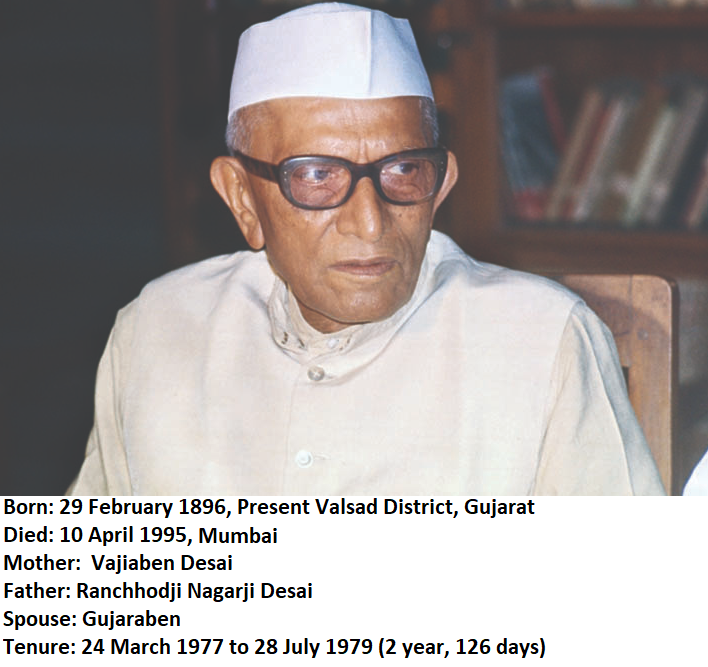
Morarji Desai was the fourth Prime Minister of India.
He was the first Prime Minister who was not a member of the Indian National Congress, he was a member of the Janta Dal party.
His father was a school teacher. Mr. Desai married Gujaraben in 1911.
Morarji Desai received his primary education at The Kundala School in Saurashtra and later joined Bai Ava High School in Valsad. He joined the Gujarat Civil Service after graduating from Wilson College in Mumbai. He was accused of bias in the riots in Godhra during 1927-28, due to which he resigned from the post of Deputy Collector of Godhra in 1930.
He was also the Chief Minister of Bombay State, Home Minister, Finance Minister, and 2nd Deputy Prime Minister of India. He was appointed as Deputy Prime Minister and Minister of Finance in Indira Gandhi's cabinet, until 1969.
Top 10 Highest Mountains in the world
In November 1969, Morarji Desai left the Congress party. He joined the Janata Party in 1975. In the Lok Sabha elections of March 1977, the Janata Party got a clear majority. At that time there were two more contenders for the post of Prime Minister, Chaudhary Charan Singh and Jagjivan Ram. But Jayaprakash Narayan had backed Desai, taking advantage of the role of 'Kingmaker'.
On 24 March 1977, at the age of 81, Morarji Desai became the Prime Minister of India and remained in the post till 28 July 1979.
He was the oldest Prime Minister of India.
Due to the estrangement with Chaudhary Charan Singh, he had to resign before the end of his tenure.
He is the only person awarded India's highest honor 'Bharat Ratna' and Pakistan's highest honor Nishan-e-Pakistan.
He died at the age of 99 in 1995.
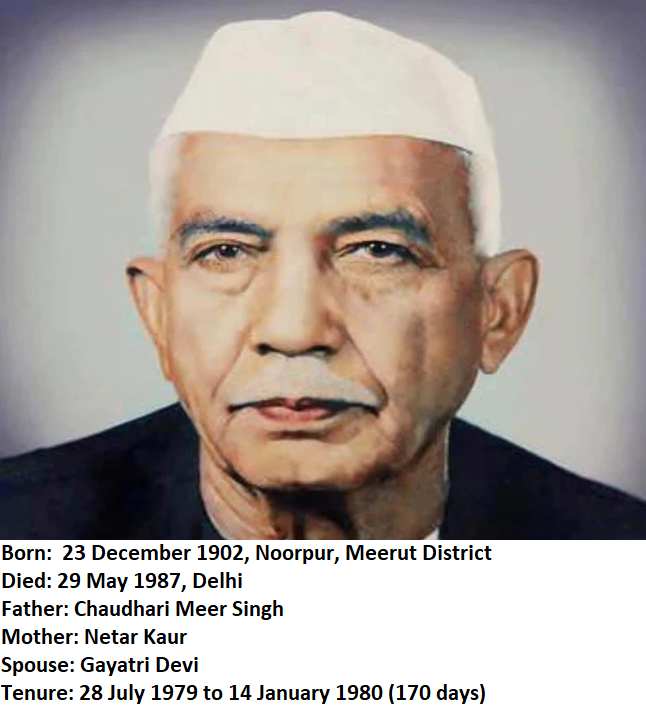
Chaudhari Charan Singh was the fifth prime minister of India.
Charan Singh got his primary education in Noorpur and after that, he was admitted to the government high school in Meerut for matriculation. In 1923, Charan Singh graduated in science and two years later in 1925, he passed the postgraduate examination in art class. After this, he studied law at Agra University and then started his practice in Ghaziabad in 1928 after passing the law examination.
Chaudhary Charan Singh's tenure as Prime Minister lasted from July 28, 1979, to January 14, 1980.
President Neelam Sanjeeva Reddy gave him time till 20 August to prove his majority, but Indira Gandhi’s party Indian National Congress withdrew her support from Bharatiya Lok Dal Government on 19 August, thus Chaudhary Charan Singh resigned from the post of Prime Minister.
Chaudhary Charan Singh was the only Prime Minister who never faced Parliament when he was Prime Minister.
He became the Chief Minister of Uttar Pradesh on 3 April 1967.
He resigned as Chief Minister on 17 April 1968. He had good success in the midterm elections and again became the Chief Minister on 17 February 1970.
After that, when he became the Home Minister (24 March 1977 - 1 July 1978) in the Central Government, he established the Mandal and Minorities Commission. In 1979, the National Bank for Agriculture and Rural Development [NABARD] was established as Finance Minister and Deputy Prime Minister (24 March 1977 - 28 July 1979).
In India, Chaudhary Charan Singh's birthday is celebrated as 'National Farmer's Day.
Chaudhary Charan Singh died in 1987 in Delhi.
Books are written by Chaudhary Charan Singh -
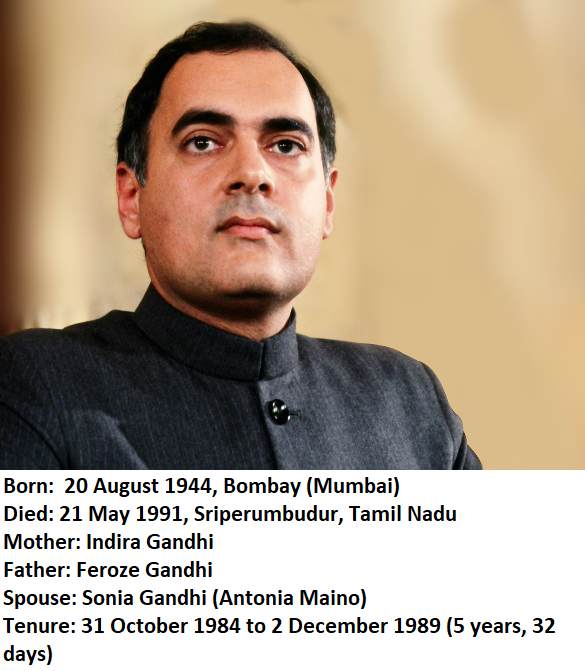
Rajiv Gandhi was the sixth Prime Minister of India.
He was the youngest Prime Minister of India at the age of 40.
Rajiv Gandhi got his early education at the prestigious Doon School located in the foothills of the Himalayas. After leaving school, Rajiv Gandhi went to Trinity College, Cambridge, but soon moved away from that to Imperial College in London, he studied mechanical engineering from there, but for some reason, he could not complete it. After coming to India, Rajiv Gandhi started working as a pilot in Indian Airlines.
He entered politics in 1980 after the death of his brother Sanjay Gandhi on 23 June 1980.
He was a Pilot before entering Politics because he was not interested in politics.
He became an MP by winning the Lok Sabha elections from Amethi and became the Prime Minister of India after the assassination of Prime Minister Indira Gandhi on 31 October 1984 by two of her Sikh bodyguards, Satwant Singh and Beant Singh, to avenge the military attack on the Golden Temple during Operation Blue Star.
What are the seven continents?
Rajiv Gandhi is considered the father of the information revolution in India. He is credited for the computerization and telecommunications revolution of the country.
He worked to provide 33% reservations to women in local self-government institutions. Rajiv Gandhi reduced the voting age from 21 to 18.
Rajiv Gandhi was assassinated in a bomb blast on May 21, 1991, by a terrorist organization called 'Liberation Tigers of Tamil Eelam' while campaigning for elections in Sriperumbudur, Tamil Nadu.
In 1991, Rajiv Gandhi was awarded by Bharat Ratna, the country's highest civilian award. The birth anniversary of Rajiv Gandhi is observed as Sadbhavana Diwas or Harmony Day.
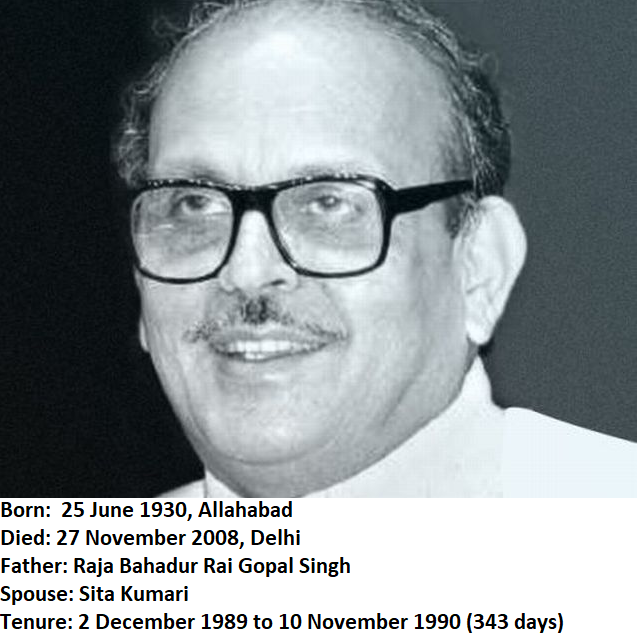
V.P Singh was the seventh Prime Minister of India.
He was also the Chief Minister in Uttar Pradesh from 9 June 1980 to 28 June 1982.
V.P Singh promised the people of Uttar Pradesh that he would end the terror of dacoits, but he did not succeed in it. So he resigned from the post of Chief Minister.
He became the Union Minister of Commerce on 29 January 1983 and the Finance Minister of India on 31 December 1984. He was also the Defence Minister in Rajiv Gandhi's government. Vishwanath Pratap Singh was also a member of the Rajya Sabha.
Vishwanath Pratap Singh studied at the Universities of Allahabad and Poona. He was the President of the Vidyarthi Union of Uday Pratap College, Varanasi from 1947–to 1948. He was also the Vice President of the Student Union of Allahabad University.
Because of Bofors Scam during Rajiv Gandhi’s government, VP Singh resigned from the Congress party.
VP Singh formed a new party, Rashtriya Morcha in 1988. Lok Sabha elections were held in 1989. But no party got a majority. So the V.P. Singh formed a coalition government at the center, which was supported by the Bharatiya Janata Party on one side and the leftist parties on the other side.
VP Singh became the Prime Minister of India in 1989.
But this government of the National Front could not run for more than 11 months. After the arrest of BJP leader LK Advani at the time of the rath yatra in 1991, the party formed V.P. Singh, who had withdrawn the government's support.
He married Sita Kumari on her birthday on 25 June 1955.
Vishwanath Pratap Singh died at the age of 77 at the Apollo Hospital in Delhi on November 27, 2008, because of kidney disease for a long time.
What are the layers of the earth?
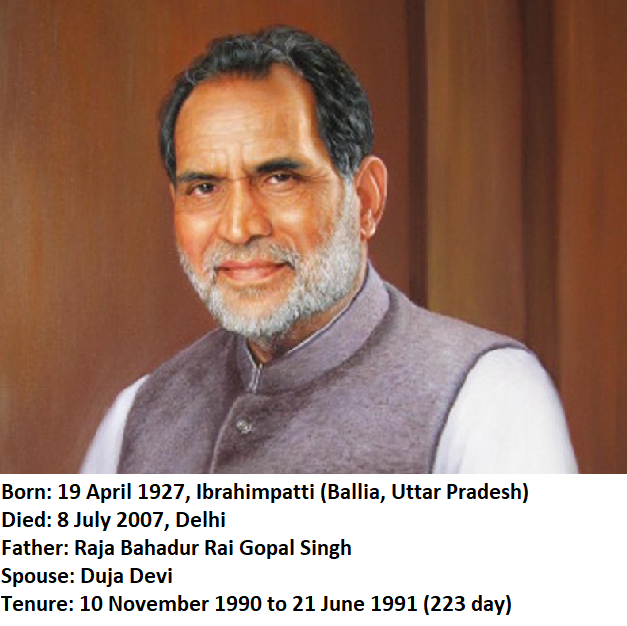
Chandra Shekhar Singh was the Eighth Prime Minister of India.
He is the first Indian Prime Minister who has never held any Government office.
He did his schooling at RamKaran Inter College, Bhimpura. He was awarded a Bachelor of Arts (graduate) degree at Satish Chandra P.G. College. He attended Allahabad University, obtaining his master's degree in political science in 1950. He was known as a "firebrand" in student politics.
When the Janata Party government was formed in 1977, he took the post of National President of the Janata Party, not taking the post of minister.
Chandra Shekar Singh became the Prime Minister of India on 10 November 1990 with the support of the Indian National Congress and on 6 March 1991, Congress withdrew support. So he lost the support of the alliances, and he resigned from the post of Prime Minister.
Chandra Shekhar was prime minister only for seven months, the second shortest period after that of Charan Singh.
He also handled the Minister of Information and Broadcasting, Minister of Home Affairs, and Minister of Defence during his tenure as a Prime Minister.
Chandra Shekhar died on 8 July 2007 in the Apollo Hospital in New Delhi three months after his 80th birthday. He had been suffering from multiple myeloma for some time.
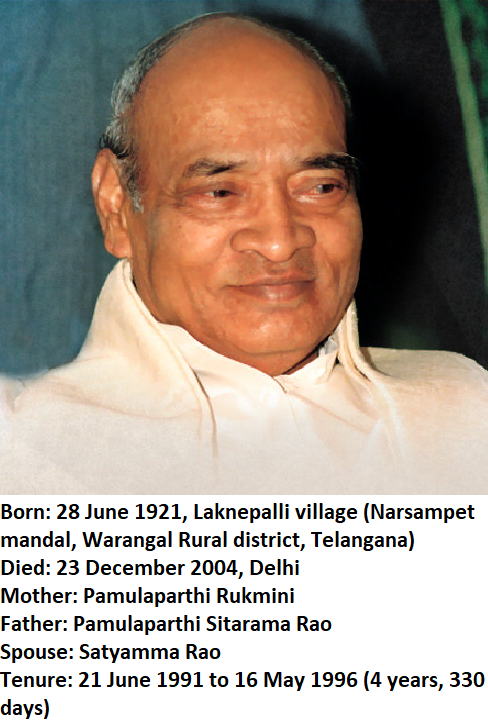
P.V (Pamulapati Venkata) Narasimha Rao was the ninth Prime Minister of India.
Rao completed his primary education in Katkuru village of Bheemadevarapally Mandal in Warangal Urban district and studied for his Bachelor's degree in the Arts College at the Osmania University. Then he went on to Hislop College, (now under Nagpur University), where he completed a Master's degree in law. He completed his law from Fergusson College in Pune of the University of Bombay (now Mumbai).
Narasimha Rao married Satyamma Rao.
He is also known as the "Father of Indian Economic Reforms".
Rao became the Chief Minister of Andhra Pradesh from 1971 to 1973 and implemented land reforms and land ceiling acts strictly Rao was the first Prime Minister from the south Indian state of Andhra Pradesh.
He was the Foreign Affairs Minister from 14 January 1980 to 18 July 1984 and then from 1988 to 1989, Home Minister from 19 July 1984 to 31 December 1984, and Defense Minister from 31 December 1984 to 25 September 1985.
He also held the additional charge of the Planning Ministry from 5 November 1984. He took over as Human Resource Development Minister on 25 September 1985. He also chaired the G-77 meeting in New York in March 1980.
Rao suffered a heart attack on 9 December 2004 and was taken to the All India Institute of Medical Sciences where he died 14 days later at the age of 83.
PV Narasimha Rao's body will be taken to Hyderabad for the funeral.
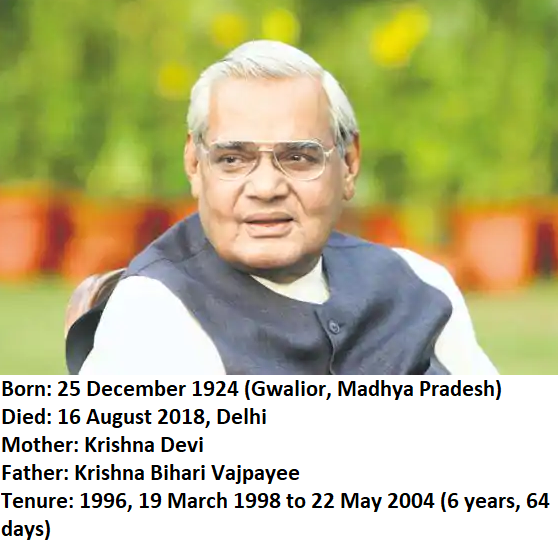
Atal Bihari Vajpayee was the tenth Prime Minister of India.
He was a Hindi poet, journalist, and sharp speaker.
He served three terms as the Prime Minister of India, first for a term of 13 days in 1996, then for a period of 13 months from 1998 to 1999, Then a full term from 1999 to 2004.
In the 1996 Lok Sabha elections, the BJP emerged as the largest party in the country and Vajpayee became the Prime Minister for the first time.
However, his government collapsed in 13 days for not achieving an absolute majority in Parliament.
In the 1998 Lok Sabha elections, the party won more seats and with the help of some other parties, Vajpayee formed the NDA and he again became the Prime Minister. This government lasted for 13 months, but in the middle Jayalalithaa's party left the government, due to which the government fell.
The BJP returned to power in the 1999 Lok Sabha elections and this time Vajpayeeji completed his term.
Vajpayee was the first Prime Minister of the National Democratic Alliance (NDA) government to complete 5 years of the non-Congress Prime Minister post without any problem. He formed a government with a coalition of 24 parties consisting of 81 ministers.
Atal Bihari Vajpayee was also the Minister of External Affairs in the cabinet of Prime Minister Morarji Desai from 1977 to 1979.
He was also called "Bhishmapithamah" because of his pledge to remain unmarried for a lifetime.
During his tenure, the Pokhran II nuclear test in the Pokhran district of Rajasthan was completed in 1998 after 24 years of its first nuclear test (Smiling Buddha) in 1974.
On 19 February 1999, a bus service was started from Delhi to Lahore under the name 'Sada-e-Sarhad'. Inaugurating this service, Vajpayeeji as the first traveler traveled to Pakistan and met Nawaz Sharif and made a new beginning in mutual relations.
During the tenure of Atal Bihari Vajpayee in 1999, the Pakistani army and militants infiltrated the Kargil area and captured many hill peaks, which led to the Kargil War. In this war, the Indian army suffered a lot of loss of life and property due to unfavorable conditions.
The Golden Quadrilateral Project or GQ project) was launched to connect all four corners of India by road. Under this, Delhi, Calcutta, Chennai, and Mumbai were connected by highways.
The administration of Narendra Modi declared in 2014 that Vajpayee's birthday, 25 December, would be marked as Good Governance Day.
Vajpayee did his schooling at the Saraswati Shishu Mandir in Gwalior. In 1934, he was admitted to the Anglo-Vernacular Middle (AVM) School in Barnagar, Ujjain district. Vajpayee did his BA education in Hindi, English, and Sanskrit from Gwalior's Victoria College (now Maharani Laxmi Bai Govt. College of Excellence). He completed his post-graduation with an MA in Political Science from DAV College, Kanpur.
In 1980, Atal Bihari Vajpayee, unhappy with the Janata Party, left it and in established of the Bharatiya Janata Party (BJP). Atal Bihari Vajpayee became the President of the BJP on 6 April 1980.
In 2015, he was conferred India's highest civilian honor, the Bharat Ratna, by the President of India, Pranab Mukherjee, and Padma Vibhushan in 1992.
He died on 16 August 2018 of an age-related illness.
List of books and poems written by Atal Bihari Vajpayee Ji -
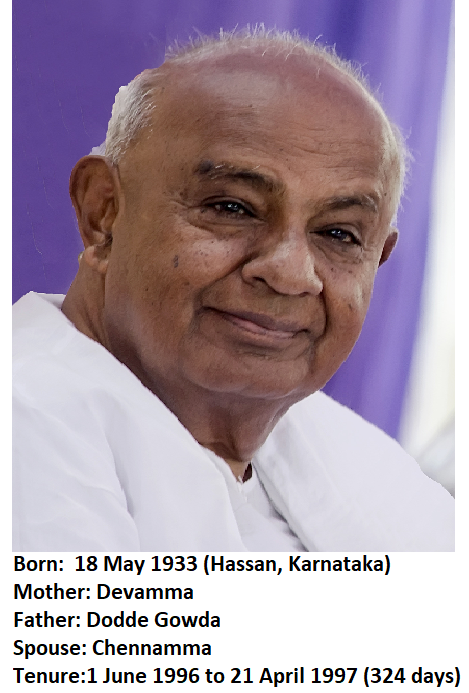
H.D (Haradanahalli Doddegowda) Deve Gowda was the eleventh Prime Minister of India.
He was also the Chief Minister of Karnataka from 1994 to 1996.
Gowda earned a diploma in civil engineering from L. V. Polytechnic, Hassan.
Gowda married Chennamma in 1954.
In the 1996 Lok Sabha elections, no party got a majority. BJP got 161 seats and BJP became the largest party. The Congress was in second place with 141 seats and the Janata Dal got 46 seats and was in the third position. Being the largest party, BJP was invited to form the government.
On 16 May 1996, Atal Bihari Vajpayee was sworn in as the Prime Minister. But he could not get a majority in the Lok Sabha and within 13 days the government fell.
Then the next party Congress had 141 seats, but Congress did not stake a claim to form the government. After this, the United Front, a coalition of about 13 parties like Janata Dal, Samajwadi Party, and DMK, thought of forming the government, which the Congress supported.
HD Deve Gowda's name was proposed as Prime Minister of India. HD Deve Gowda was sworn as the 11th Prime Minister of India on 1 June 1996.
H.D Deve Gowda served as a Prime Minister until 21 April 1997.
About 11 months later, Congress withdrew its support and Deve Gowda had to resign.
Deve Gowda is currently active in politics and he is the president of Janata Dal-Secular. He is also a Member of Parliament from Hassan's seat in Karnataka.
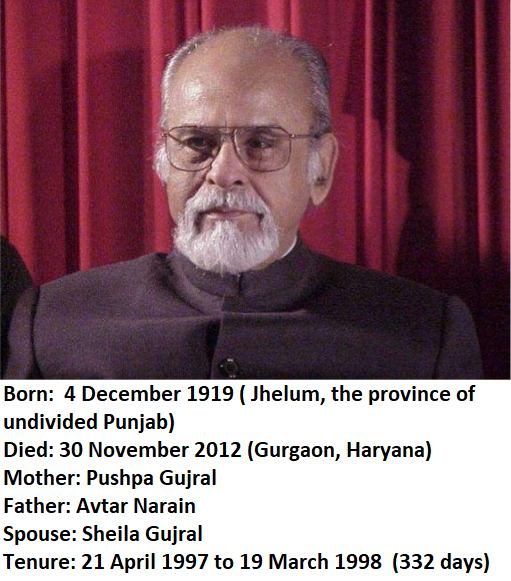
Inder Kumar Gujral was the twelfth Prime Minister of India.
He studied at D.A.V. College, Hailey College of Commerce, and Forman Christian College, Lahore. He had received the title of MA, B.Com, Ph.D. And D. Litt.
In addition to being proficient in Hindi, Urdu, and Punjabi languages, he was also knowledgeable in many other languages.
Inder Kumar Gujral married Sheila Gujral in 1945.
In 1996, three Prime Ministers were formed within two years but still, the term of the Lok Sabha could not be completed. After BJP's Atal Bihari Vajpayee and United Front's HD Deve Gowda, Indra Kumar Gujral became the third Prime Minister on 21 April 1997 with the support of the Indian National Congress.
But after about 11 months, the Congress withdrew its support and the Gujral government fell.
I.K. Gujral served as the Prime Minister of India from 21 April 1997 to 19 March 1998.
Before becoming the Prime Minister of India, Gujral became the foreign minister in 1996. On 28 June 1996, he also held the additional charge of the Ministry of Water Resources.
He was the Minister of Water Resources in the year 1989–90. He was the Ambassador of India (Cabinet-level) in the USSR from 1976 to 1980 and from 1967 to 1976.
He held the post of Minister of Communications and Parliamentary Affairs, Minister of Information, Broadcasting, and Communications, Minister of Construction and Housing, Minister of Information and Broadcasting, Planning Minister.
The Meaning and Definition of Inflation
During his short tenure, he introduced the Gujral DOCTRINE policy, which strengthened India's relations with neighboring countries.
He has been known as the 'Bhadrapurush of politics'.
He died on 30 November 2012, at the age of 92 due to a lung infection in Medanta hospital, Gurgaon, Haryana. He was cremated on 1 December at the site of Shamta.
Atal Bihari Vajpayee completed the full five-year term after failing two times.
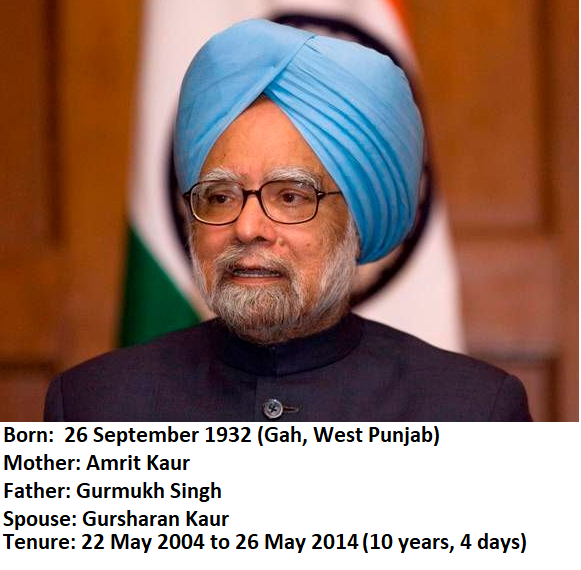
Manmohan Singh was the thirteenth Prime Minister of India.
Manmohan Singh was the second Prime Minister after Jawaharlal Nehru who was re-elected after completing a full five-year term.
He was the first Sikh Prime Minister of India.
Dr. Singh completed his matriculation from Punjab University in 1948. Then he completed his bachelor's degrees in 1952 and master's in Economics in 1954 from Punjab University. He later went to Cambridge University from where he got a Ph.D. degree. Later in 1962, he did his D.Phil in Economics from Nuffield College, Oxford University.
He completed his Economics Tripos at the University of Cambridge as he was a member of St John's College in 1957.
He was a professor at Punjab University and later at the prestigious Delhi School of Economics. He also became an honorary professor at Delhi University.
Meanwhile, he was also an advisor in the United Nations Trade and Development Conference Secretariat and was a secretary in the South Commission in Geneva from 1987 to 1990.
Dr. Singh was appointed as the Economic Advisor (1972–1976) in the Ministry of Commerce and Industry of India. Soon after, in 1972, he was made the Chief Economic Advisor in the Ministry of Finance.
In his later years, he has also been the Deputy Chairman of the Planning Commission (1985–1987) during Rajiv’s government, Governor of the Reserve Bank (1982–1985), Economic Advisor to the Prime Minister in 1990, and Chairman of the University Grants Commission.
He also served as the Finance Minister from 21 June 1991 to 16 May 1996 in the government of P.V Narshimha Rao. Manmohan Singh is known for economic reforms in the country.
Manmohan Singh is also considered the father of liberalization, privatization, and globalization.
Congress got a majority in the 2004 Lok Sabha Elections and Manmohan Singh was Sworn as the Prime Minister on 22 May 2004 and became Prime Minister for the second time on 22 May 2009.
The 2G spectrum scam and coal allocation scam happened during Manmohan Singh's tenure. The Manmohan government was criticized due to these scams.
Currently, he is a Rajya Sabha member from Rajasthan.
Awards and Honors of Manmohan Singh -

Narendra Modi is the fourteenth and current Prime Minister of India from 26 May 2014.
He was also the Chief Minister of Gujarat. He became the Chief Minister of Gujarat in place of Keshubhai Patel.
Narendra Modi is the first Prime Minister of India who was born after independence.
After Atal Bihari Vajpayee, he is the second non-Congress one to win two consecutive terms.
He was elected Chief Minister by the people of Gujarat from October 7, 2001, to May 22, 2014, four 4 consecutive times due to his work in the state.
Narendra Modi did his schooling in Bhagavath Acharya Narayanacharya School in Vadnagar. In 1978, Modi received a Bachelor of Arts degree in Political Science from the University of Delhi. In 1983, he received a Master of Arts degree in Political Science from the University of Gujarat.
Modi left his home due to his child marriage with Jashodaben Chimanlal Modi.
Modi was born in a Gujarati family of Vadnagar and at the age of 8, he joined the RSS (Rashtriya Swayamsevak Sangh). He is also a member of the BJP. He joined the BJP in the year 1985.
In the election of 2014, Bharatiya Janata Party achieved unprecedented success by winning 282 seats.
As an MP, he contested from Varanasi (Uttar Pradesh) and Vadodara (Gujarat) parliamentary constituency and won from both places.
Modi was sworn as Prime Minister of India on 26 May 2014.
In the year 2019, the Bharatiya Janata Party contested again under Modi’s leadership and this time won a total of 303 seats.
He is the first non-Congress to win both terms with a majority.
The BJP's supporting party, the NDA, got a total of 352 seats.
Narendra Modi became the Prime Minister for the second consecutive time by taking oath on 30 May 2019. He has become the 4th Prime Minister of India who served two consecutive tenures.
The current age of Prime Minister Narendra Modi is 70 years.
Article 75: The Prime Minister of India is appointed by the President and the other Ministers are appointed by the President of India on the advice of the Prime Minister.
Below you can see the Annual and Monthly Salary of the Prime Minister of India :
Monthly: ₹ 1,60,000.00 (Basic salary per month after 30% pay cut)
Monthly: ₹ 2,00,000 (Basic salary per month)
Annual: ₹ 19,20,000.00
Q.1 Who was the first prime minister of India?
Jawaharlal Nehru
Q.2 Who was the second prime minister of India?
Lal Bahadur Shastri
Q.3 Which prime minister of India was a commercial pilot?
Rajeev Gandhi
Q.4 Who was the youngest prime minister?
Rajeev Gandhi
Q.5 What is the minimum age for a PM in India?
25 Years
Q.6 Who is the second youngest prime minister?
Indira Gandhi
Q.7 Who was the first Prime Minister of India?
Jawaharlal Nehru
Q.8 Who was the first woman Prime Minister of India?
Indira Gandhi
Q.9 Who Appoints the Prime Minister of India?
President of India
Q.10 What is the tenure of the prime minister?
5 Years
Q.11 What is the time period of a prime minister in India?
5 Years
Q.12 How many times can a person do the PM of India?
India doesn't have any such restriction. A person can be a PM as many times as nominated by his party and elected by the country
Q.13 Who was the PM after Shastri?
Indira Gandhi
Q.14 Where did Gulzarilal Nanda was born?
Sialkot, Panjab
Q.15 Who is the first BJP prime minister of India?
Atal Bihari Vajpayee
Q.16 Who was the PM before Modi?.
Manmohan Singh
Q.17 Who was the youngest Prime Minister of India?
The youngest person to become Prime Minister was Rajiv Gandhi, who became Prime Minister at the age of 40 years, 72 days.
Q.18 Which prime minister has the longest tenure?
Jawaharlal Nehru